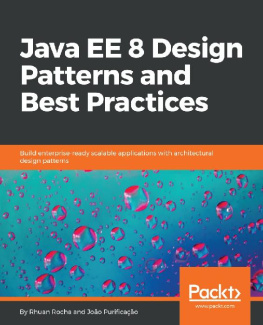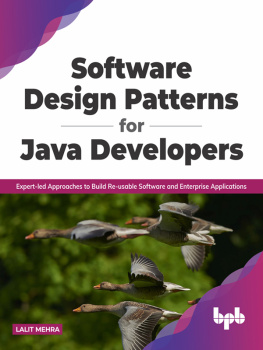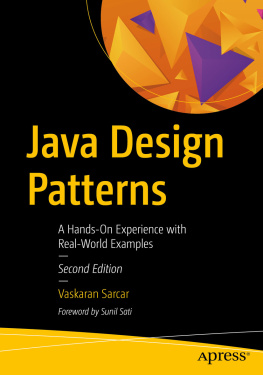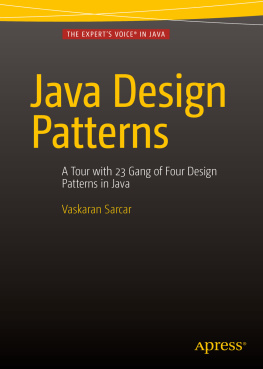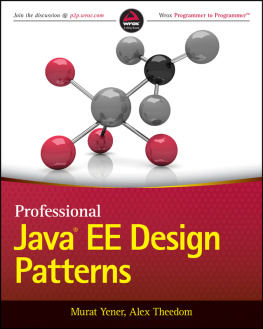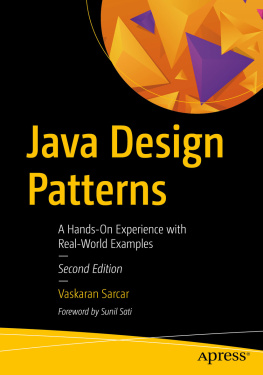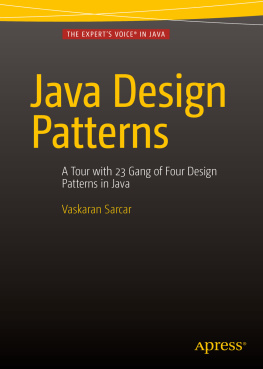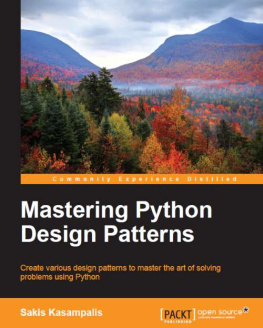Joao Purificacao - Java EE 8 Design Patterns and Best Practices
Here you can read online Joao Purificacao - Java EE 8 Design Patterns and Best Practices full text of the book (entire story) in english for free. Download pdf and epub, get meaning, cover and reviews about this ebook. year: 2018, publisher: Packt Publishing, genre: Computer. Description of the work, (preface) as well as reviews are available. Best literature library LitArk.com created for fans of good reading and offers a wide selection of genres:
Romance novel
Science fiction
Adventure
Detective
Science
History
Home and family
Prose
Art
Politics
Computer
Non-fiction
Religion
Business
Children
Humor
Choose a favorite category and find really read worthwhile books. Enjoy immersion in the world of imagination, feel the emotions of the characters or learn something new for yourself, make an fascinating discovery.
- Book:Java EE 8 Design Patterns and Best Practices
- Author:
- Publisher:Packt Publishing
- Genre:
- Year:2018
- Rating:5 / 5
- Favourites:Add to favourites
- Your mark:
Java EE 8 Design Patterns and Best Practices: summary, description and annotation
We offer to read an annotation, description, summary or preface (depends on what the author of the book "Java EE 8 Design Patterns and Best Practices" wrote himself). If you haven't found the necessary information about the book — write in the comments, we will try to find it.
Get the deep insights you need to master efficient architectural design considerations and solve common design problems in your enterprise applications.
Key Features- The benefits and applicability of using different design patterns in JAVA EE
- Learn best practices to solve common design and architectural challenges
- Choose the right patterns to improve the efficiency of your programs
Patterns are essential design tools for Java developers. Java EE Design Patterns and Best Practices helps developers attain better code quality and progress to higher levels of architectural creativity by examining the purpose of each available pattern and demonstrating its implementation with various code examples. This book will take you through a number of patterns and their Java EE-specific implementations.
In the beginning, you will learn the foundation for, and importance of, design patterns in Java EE, and then will move on to implement various patterns on the presentation tier, business tier, and integration tier. Further, you will explore the patterns involved in Aspect-Oriented Programming (AOP) and take a closer look at reactive patterns. Moving on, you will be introduced to modern architectural patterns involved in composing microservices and cloud-native applications. You will get acquainted with security patterns and operational patterns involved in scaling and monitoring, along with some patterns involved in deployment.
By the end of the book, you will be able to efficiently address common problems faced when developing applications and will be comfortable working on scalable and maintainable projects of any size.
What you will learn- Implement presentation layers, such as the front controller pattern
- Understand the business tier and implement the business delegate pattern
- Master the implementation of AOP
- Get involved with asynchronous EJB methods and REST services
- Involve key patterns in the adoption of microservices architecture
- Manage performance and scalability for enterprise-level applications
Java developers who are comfortable with programming in Java and now want to learn how to implement design patterns to create robust, reusable and easily maintainable apps.
Downloading the example code for this book You can download the example code files for all Packt books you have purchased from your account at http://www.PacktPub.com. If you purchased this book elsewhere, you can visit http://www.PacktPub.com/support and register to have the files e-mailed directly to you.
Joao Purificacao: author's other books
Who wrote Java EE 8 Design Patterns and Best Practices? Find out the surname, the name of the author of the book and a list of all author's works by series.

